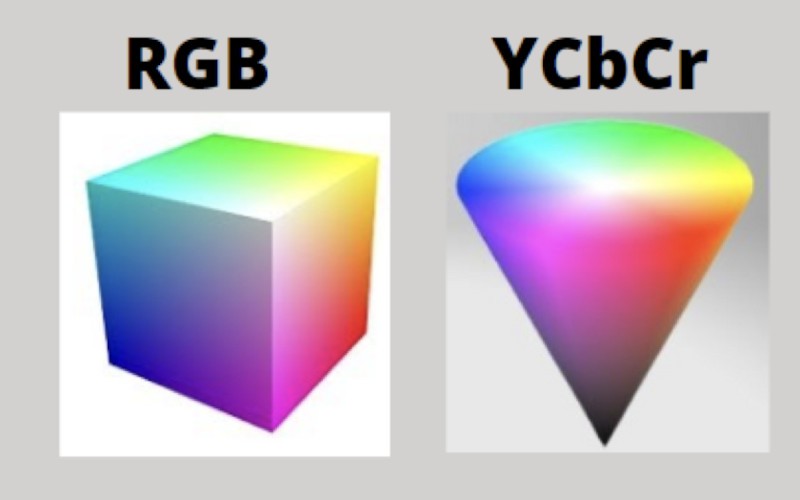Regarding digital color management, there are two main ways to represent colors: RGB and YCbCr. While these color models are used in various settings, they are easy to think of as being used in different situations.
RGB is most often used for images that will be displayed on a screen, while YCbCr is more often used for images that will be printed.
When selecting a color model, it is important to consider the purpose of the image and how it will be used. This guide will provide an overview of RGB and YCbCr color models and explain when each model is most appropriate.
What is RGB?
RGB (Red, Green, Blue) is a color model representing colors using a combination of red, green, and blue light. The intensity of each color can be represented by a number from 0 to 255, with 0 being the lowest intensity and 255 being the highest intensity. When all three colors are combined, they create a full-color image.
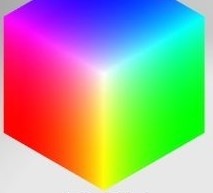
RGB is the most common color model used for digital images due to its ability to create a wide range of colors. However, it should be noted that the human eye is not equally sensitive to all colors.
For example, green is typically seen as being brighter than red, even though they may have the same intensity. This is because the human eye is more sensitive to green light than red light.
When it comes to digital image file formats, RGB is the most common format. This is because RGB images can be displayed.
Where is RGB Used?
RGB has been around for a few decades and has many uses. The main areas where RGB has been used include compatibility, batteries, design, performance, heat management, and gaming capabilities.
The following are the main uses of RGB:
1. Compatibility
RGB is primarily used in computers and computer parts, a standard that most major companies accept. This means that information can be transferred between different devices without any issues. The LED light will appear on the LED strip when plugging in a USB stick.
2. Batteries
RGB has been used in the battery industry to indicate when a battery is nearing the end of its life cycle. This is done through LEDs that indicate the remaining charge in a battery. As the charge gets lower, the color changes from white to yellow and then orange, and finally red so that it is clear just how much charge remains in a battery.
3. Design
In the design industry, RGB has been used to provide visual feedback. For example, when a laptop is switched on, the power LED will light up red to indicate it is on. RGB technology is also used for capacitive touch screens and LED strip lighting.
LED strip lighting is used to indicate a door opening or closing via the lights being turned on or off.
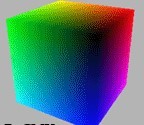
4. Performance
In the performance area, RGB has been used so that the user can detect specific areas of the computer. For example, a CPU fan speed reader uses LEDs to indicate the fan’s speed.
5. Heat Management
Heat management uses RGB, again, to indicate the current temperature of particular parts of a computer. This is a good way to ensure that the computer is not overheating and is safe to use.
6. Gaming Capabilities
RGB also improves gaming performance by enabling the lighting to be controlled through software, such as games. This means that the lights’ colors can be changed to suit the game being played.
7. Components
RGB is now becoming more popular in components as it can help to improve a computer setup by providing visual feedback. RGB can be used in gaming keyboards, mouse pads, and even headphones to provide extra aesthetics for users.
What is YCbCr?
YCbCr is a digital video format that encodes color information using a two-color component model, typically referred to as YCbCr 4:2:2. The YCbCr color model is used in a variety of digital video and audio applications, including HDTV, Blu-ray, DVD, digital video cameras, and some digital audio systems.
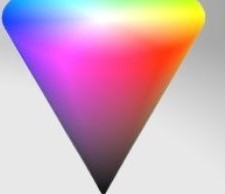
Where is YCbCr Used?
YCbCr has lots of uses, with compatibility in different industries. Here are some of the places YCbCr is used:
1. Design
YCbCr is used to display color and gray scales in a standard way that would be familiar to everyone.
2. Digital Imaging
YCbCr is used as a common digital image format. This is a common format between video, graphics, and photography.
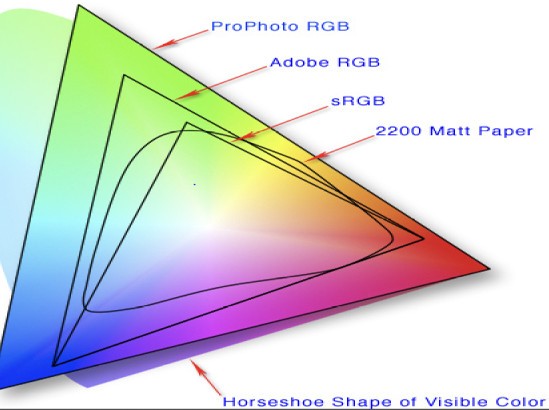
3. Video
YCbCr is used as the color space for digital video and in computer monitors(70 percent of consumer computer monitors use YCbCr). It is used in television production and on DVD players.
4. Devices
YCbCr is used on mobile phones, digital cameras, video games, and other devices.
5. Graphics
YCbCr is used in computer graphics for monitor calibration and pixel manipulation(which does not involve color).
6. Sound
This is used in audio recording and reproduction, for instance, when audio is converted to digital and vice versa. The specification is standardized in ITU-R BT.601, in the standardization of JPEG (ISO/IEC 10918-1).
7. Film
YCbCr is used for color encoding motion pictures in HD (High Definition) and SD (Standard Definition) formats.
What is the Difference Between RGB and YCbCr?
There are many different color spaces in which images can be stored. The most popular formats are RGB and YCbCr. These are two different methods of storing color information and can be quite confusing because they use some common terms differently.
The following are the differences between the two color formats:
1. Bit Depth
Image data (RGB and YCbCr) are stored using 8 bits per pixel. This means there are 256 shades of grey, representing the full range from 0–255. When you have more than one color in an image, every pixel is assigned a unique shade of grey.
However, you can have only 256 shades of grey when you have four colors in an image. If your image contains more than four colors, you need a 16-bit depth to store it.
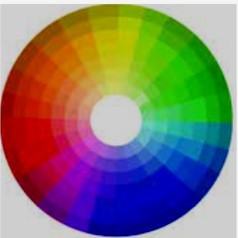
2. Color Encoding
RGB and YCbCr use red, green, and blue as color components to store an image in the computer, but they store them using different methods. RGB uses 24-bit color, which means it uses 8 bits per component.
The advantage of this is that there are 256 shades of red, green, and blue. The disadvantage is that you can no longer have more than 255 levels of that component.
RGB uses an additive color system, meaning you get different colors depending on how much of each component you use. That is why a full red pixel will look darker than a pixel with only some red mixed.
You can also store RGB data using the YCbCr color space. In YCbCr, the first component is called Y and represents the brightness information for all channels – Red, Green, and Blue. The second component Cb represents the difference between blue and luma (Y).
The remaining three components Cr represent the difference between red and luma, green and luma, and blue and luma. This means that in RGB, you can have only 256 different shades of red. In YCbCr, you can have up to 16777216 different shades of red, or 128 times more than in RGB.
3. Image Output
RGB images have two main outputs: the sub-sampled output and the oversampled output. The oversampled output is used to produce monitors with higher resolutions, and it creates a smaller file size than the sub-sampled output.
You can also use them to set up different colors for a page, so you don’t need to use separate colors for each portion of the page. YCbCr can have only one kind of image output: a downsampled image. It is also used for DVDs and HDTVs.
4. Chroma Subsampling
The chroma is a color space that holds the color components of an image in the three-dimensional space. YCbCr uses a downsampled chroma, which means that the red information is stored at full resolution (8 bits), but the green and blue information are stored at half resolution (4 bits).
The advantage of this method is that you can get more shades of red than green or blue.
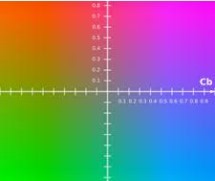
The RGB and YCbCr conversions are just two of the many color space conversion methods. The main thing to remember is that each color space has its way of storing and outputting images, but they are not necessarily better than the others.
RGB vs YCbCr: Which is Better?
While choosing between RGB and YCbCr is a decision that will ultimately be up to the individual, there are definite pros and cons. You can read more about each type of color space and how they work, but it’s best to decide which solution is the best for you.
There are two common methods for digital video color: RGB and YCbCr. Each has its benefits, but ultimately it is up to the individual to choose which works best for their needs.
Frequently Asked Questions
Why Do We Use RGB Instead Of Primary Colors?
We use RGB (Red, Green, and Blue) because it is an additive color model. This means that when we add together different amounts of red, green, and blue light, we can create any color we can imagine. The primary colors of light are red, green, and blue.
How Can I Convert Between RGB And YCbCr?
To convert between RGB and YCbCr, you must first understand the relationship between these two color models. RGB is an additive color model in which red, green, and blue light are added to create various colors. YCbCr is a subtractive color model in which yellow, cyan, and magenta dyes are used to create a range of colors.
The conversion between these two color models is not a simple matter of addition or subtraction. Instead, it is a complex process that involves transforming the colors into a different color space. The most common way to convert between RGB and YCbCr is to use a color matrix.
A color matrix is a mathematical function that maps one set of colors to another.
In the case of RGB to YCbCr conversion, the color matrix preserves the luminance (brightness) information while transforming the chrominance (color) information.
Many different color matrices can be used for RGB to YCbCr conversion. The most common color matrix is defined by the International Telecommunication Union (ITU-R BT.601). This color matrix is used in various digital video and television standards, including MPEG, DV, and HDV.
To convert from RGB to YCbCr using the ITU-R BT.601 color matrix, you need to know the original color’s red, green, and blue values. You also need to know the white point, which is the chromaticity of perfect white light.
The ITU-R BT.601 color matrix uses the following white point:
Xw = 0.3127
Yw = 0.3290
Zw = 0.3583With these values, you can use the following equation to convert from RGB to YCbCr:
Y = 0.2989 * R + 0.5866 * G + 0.1145 * B
Cb = -0.1687 * R - 0.3312 * G + 0.5000 * B + 128
Cr = 0.5000 * R - 0.4183 * G - 0.0816 * B + 128To convert from YCbCr to RGB, you can use the following equation:
R = Y + 1.4075 * (Cr - 128)
G = Y - 0.3455 * (Cb - 128) - 0.7169 * (Cr - 128)
B = Y + 1.7790 * (Cb - 128)It is important to note that the RGB values you get from this conversion will not exactly match the original RGB values. This is because the RGB color space does not exactly match the YCbCr color space. However, the difference should be very small and not noticeable to the human eye.
What Are The Advantages Of YCbCr Over RGB?
YCbCr is a digital video format that offers several advantages over the traditional RGB. The most significant advantage is that YCbCr requires less bandwidth to transmit, reducing data costs.
Another advantage is that YCbCr offers a better color definition than RGB, which can be important for certain applications such as video editing. Finally, YCbCr is less susceptible to signal interference than RGB, meaning that the overall quality of the signal is likely to be better.
Is YCbCr Used More Than RGB?
RGB is a color model that uses red, green, and blue (RGB) light to create a range of colors. RGB is used in electronic displays, such as TVs and computers, and in digital cameras and scanners to capture images.
YCbCr is a color model that uses luma (Y) and chroma (Cb and Cr) components to create a range of colors. YCbCr is used in digital video and digital still cameras to compress colors.
The main difference between RGB and YCbCr is that RGB is an additive color model while YCbCr is a subtractive color model. Additionally, YCbCr can create more colors than RGB because it uses two chroma components instead of one.
RGB is better for creating colors in electronic displays like TVs and computers. YCbCr is better for compressing colors in digital video and digital still cameras.
What’s The Advantage Of Using YCbCr Color Space?
YCbCr is a more efficient way of encoding color information than RGB. YCbCr uses fewer bits to encode the same amount of color information than RGB, resulting in a smaller file size. YCbCr also allows for more accurate color reproduction than RGB.
When displayed on a monitor or TV, YCbCr images will appear more vibrant and true-to-life than RGB images.
Why Is There No Green In YCbCr?
There is no green in YCbCr because the human eye is more sensitive to changes in green than any other color. Therefore, when converting an image to YCbCr, the green channel is subsampled by a factor of two.
This means that only half as much information about the green color is retained, resulting in a lower-quality image.
Is Full RGB Better For Gaming?
When wondering if full RGB is better for gaming, there are a few things to consider. The first is what kind of games you play. If you’re a competitive FPS player, then every little advantage counts. In that case, full RGB might give you the edge you need. It probably won’t make much difference if you’re a casual player.
The second thing to consider is your budget. Suppose you’re willing to spend a little extra on full RGB. However, if you’re trying to save money, you might want to stick with a more basic setup.
Either way, full RGB is a great addition to any gaming setup. It can give you an edge in competitive games and looks great. If you have the budget for it, then it’s worth considering.
Does RGB Cause Lag?
For gamers, one of the most important factors is input lag. This is the delay between when you press a button and when the game responds. Even a slight delay can be the difference between winning and losing.
Because of this, many gamers are wary of anything that might cause input lag, including RGB lighting. However, there is no need to worry. RGB does not cause lag. Some people may perceive a slight difference in input lag with an RGB setup, but this is due to individual factors and is not caused by the RGB itself.
Additionally, there are ways to reduce input lag with an RGB setup, such as using a game mode or reducing the resolution. Ultimately, RGB does not cause lag and can improve your gaming experience.
Does RGB Make PC Hotter?
Yes, RGB lighting can make your PC hotter. This is because the lights are usually on top of the CPU and GPU, which can block airflow and cause your components to run hotter. Additionally, RGB lights can add a lot of extra heat to your system.
If you have a lot of RGB lights, or if your PC is in a hot environment, you may want to turn off the RGB lights to help keep your PC cool.
Does RGB Affect PC Performance?
RGB is simply a way of representing the 16.7 million colors displayed digitally on a monitor. Your PC’s performance does not affect whether you use an RGB or monochrome monitor because the vast majority of monitors on the market today are based on TN (twisted nematic) or IPS (in-plane switching) panels.
You might only see a difference in performance if you use an older CRT (cathode ray tube) monitor, which can only display a limited number of colors. In that case, RGB can help improve image quality by increasing the number of colors displayed.
However, even then, the performance improvement is likely to be negligible. So, if you’re looking to upgrade your monitor, don’t worry about whether RGB will affect your PC’s performance – it won’t.
Does RGB Give Extra FPS?
FPS, or frames per second, measures how often your computer can draw an image on the screen every second. A higher FPS means a smoother and more responsive gaming experience. While most gamers are happy with a steady 60 FPS, some competitive gamers strive for even higher rates.
One way to potentially increase your FPS is to use RGB lighting. RGB lighting can help improve visibility in dark areas of games, making it easier to spot enemies. RGB lighting can also provide an aesthetic boost that can help you feel more immersed in the game.
While there is no guarantee that RGB lighting will increase your FPS, it is worth a try for gamers looking for an edge.
Do All Motherboards Support RGB?
RGB lighting has become a popular way to add style to a PC. By changing the color of the light, you can create different looks to match your personality or set the mood for gaming. Many motherboard manufacturers include support for RGB lighting on select models, but not all motherboards support RGB lighting.
If your motherboard does not support RGB lighting, you can still add RGB lighting to your PC by installing an RGB LED strip. RGB LED strips are available in various colors and can be controlled with a remote or an app on your smartphone.
They are easy to install and provide a simple way to add RGB lighting to your PC without buying a new motherboard.
Does Motherboard Matter For RGB?
Yes, the motherboard matters for RGB. If you want complete control over your RGB lighting, you’ll need a motherboard with good RGB support. Otherwise, you’ll be limited in what you can do. There are a few different ways to control RGB lighting, and the best way will depend on your needs. You can use the built-in RGB control on your motherboard if you want basic lighting control.
This will usually be limited to a few basic colors, but it’s enough to start. You’ll need to purchase an RGB controller if you want more control. This will allow you to connect multiple RGB devices and control them from one central location. There are a few different types of controllers available, so you’ll need to decide which one is right for you.
If you want the absolute best control over your RGB lighting, you’ll need to purchase a controller that supports addressable RGB. This controller will allow you to control each LED, giving you complete control over the lighting.
Conclusion
Color should be essential in any image processing or video compression application. The RGB color model is an additive in which red, green and blue light are added in various ways to reproduce a broad array of colors.
The YCbCr color model, on the other hand, is a subtractive color model used in video and digital photography. It is based on the human visual system and considers how humans perceive color. So, when choosing between RGB and YCbCr, it is important to consider the application and the intended audience.

